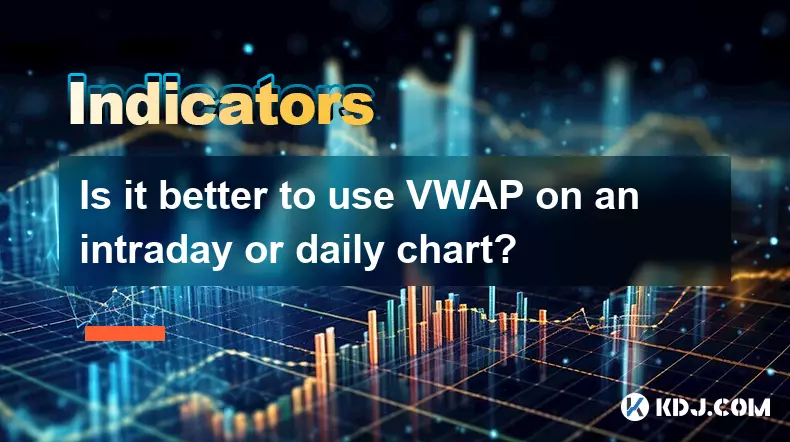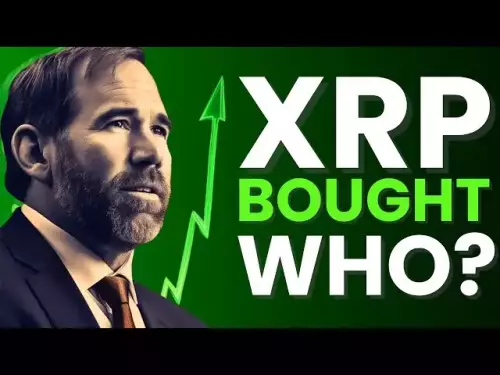-
 bitcoin
bitcoin $108842.957301 USD
-1.88% -
 ethereum
ethereum $3931.777121 USD
-1.66% -
 tether
tether $1.000186 USD
-0.03% -
 bnb
bnb $1153.250882 USD
-2.20% -
 xrp
xrp $2.367904 USD
-1.94% -
 solana
solana $186.182050 USD
-4.20% -
 usd-coin
usd-coin $0.999997 USD
0.00% -
 tron
tron $0.316949 USD
-1.00% -
 dogecoin
dogecoin $0.190780 USD
-3.12% -
 cardano
cardano $0.651324 USD
-2.67% -
 hyperliquid
hyperliquid $37.141055 USD
-0.85% -
 ethena-usde
ethena-usde $0.999224 USD
-0.09% -
 chainlink
chainlink $17.579031 USD
-2.47% -
 bitcoin-cash
bitcoin-cash $509.426284 USD
-2.79% -
 stellar
stellar $0.315298 USD
-2.93%
What's a simple KDJ indicator strategy for beginners?
The KDJ indicator helps crypto traders spot overbought/oversold levels and momentum shifts using %K, %D, and %J lines, ideal for timing entries in volatile markets like Bitcoin.
Oct 16, 2025 at 01:54 pm

Understanding the KDJ Indicator in Cryptocurrency Trading
The KDJ indicator, also known as the Stochastic Oscillator with a J-line adjustment, is widely used in cryptocurrency trading due to its sensitivity to price movements. It consists of three lines: %K (fast stochastic), %D (slow stochastic), and %J (a triple-exponential smoothing line). These lines oscillate between 0 and 100, helping traders identify overbought and oversold conditions in volatile markets like Bitcoin or Ethereum.
For beginners entering the crypto space, mastering a simple yet effective strategy using the KDJ can significantly improve timing for entries and exits. The core principle lies in interpreting crossovers and divergence patterns within defined thresholds. Since digital assets often experience sharp swings, the KDJ’s responsiveness makes it suitable for short-term trading decisions on platforms such as Binance or Bybit.
Basic Rules for a Beginner-Friendly KDJ Strategy
- Set the default KDJ parameters (typically 9,3,3) on your trading chart using tools available on exchanges or TradingView.
- Identify overbought signals when the %K line crosses above 80 and oversold conditions when it drops below 20.
- Look for bullish setups when both %K and %D are below 20 and %K crosses upward above %D—this suggests potential upward momentum.
- Recognize bearish setups when both lines rise above 80 and %K crosses downward below %D—indicating possible pullbacks.
- Use the J-line to confirm strength; values above 100 may signal extreme bullishness while readings under 0 suggest strong bearish pressure.
Risk Management When Applying KDJ in Volatile Markets
Cryptocurrency prices can move unpredictably due to news events, regulatory updates, or whale activity. Relying solely on KDJ signals without risk controls can lead to substantial losses.
- Always combine KDJ signals with basic trend analysis—align trades with the dominant direction seen on higher timeframes like 4-hour or daily charts.
- Place stop-loss orders just below recent swing lows for long positions or above swing highs for shorts to limit downside exposure.
- Avoid acting on KDJ crossovers during low-volume periods or sideways consolidation phases where false signals are common.
- Limit position size to 1–3% of total capital per trade to withstand drawdowns caused by whipsaws.
- Wait for candlestick confirmation after a crossover—don’t enter immediately upon signal appearance.
Practical Examples of KDJ Usage in Crypto Charts
On a 1-hour BTC/USDT chart, suppose the %K line has been rising from 15, crosses above the %D line at 18, and both remain under 30. This indicates early recovery from an oversold state. If the next candle closes positively and volume increases, this could be a valid long entry point.
- In late 2023, ETH/USDT showed a deep dip where KDJ dropped to 12, followed by a %K/%D bullish crossover—price rallied over 14% in the following week.
- During a pump in SOL/USDT, the J-line surged past 110 while %K and %D stayed above 80—experienced traders took profits here before a 9% correction occurred.
- A false buy signal appeared on DOGE/USDT when KDJ exited oversold but price continued falling due to negative social sentiment—highlighting the need for confluence with other factors.
- When BTC broke key resistance, KDJ was already above 60 but hadn't hit overbought—traders held positions instead of exiting prematurely based on partial readings.
Frequently Asked Questions
What does a J-line above 100 mean in a crypto chart?The J-line exceeding 100 reflects extreme bullish momentum, often seen during rapid price pumps. While it may suggest overextension, in strong uptrends it can remain elevated for extended periods—caution is advised before assuming reversal.
Can the KDJ indicator work on all cryptocurrencies?
Yes, KDJ can be applied to any tradable crypto asset including stablecoins, though effectiveness varies. Highly illiquid altcoins with erratic volume may generate misleading signals compared to major pairs like BTC or ETH.
How often should I check the KDJ if I'm day trading?
For active day trading, monitoring every 15 to 30 minutes on 5-minute or 15-minute charts is sufficient. Constantly watching can lead to emotional decisions—set alerts for key level breaches instead.
Is the KDJ better than RSI for crypto trading?
Neither is universally superior. KDJ reacts faster with triple-line dynamics, useful in fast-moving crypto markets. RSI provides smoother trends and fewer false signals. Many traders use both together for confirmation.
Disclaimer:info@kdj.com
The information provided is not trading advice. kdj.com does not assume any responsibility for any investments made based on the information provided in this article. Cryptocurrencies are highly volatile and it is highly recommended that you invest with caution after thorough research!
If you believe that the content used on this website infringes your copyright, please contact us immediately (info@kdj.com) and we will delete it promptly.
- Crypto Markets in the Red: BTC Feels the Squeeze of Liquidity Tightening
- 2025-10-17 20:25:17
- XRP, Millionaire Dreams, and the Token Landscape: A New Yorker's Take
- 2025-10-17 20:25:17
- Digital Gold, Bitcoin, and Market Value: Navigating the Crypto Landscape
- 2025-10-17 20:30:15
- FleetMining, Cloud-Mining, and Investment in 2025: What You Need to Know
- 2025-10-17 20:30:15
- Dogecoin's Wild Ride: Market Turmoil and Price Decline Explained
- 2025-10-17 18:25:12
- Newsmax, Crypto, and the Frontier of Corporate Finance: A New Yorker's Take
- 2025-10-17 18:45:16
Related knowledge

What's the main difference between VWAP and TWAP?
Oct 12,2025 at 11:54am
Understanding VWAP and Its Role in Crypto Trading1. Volume Weighted Average Price (VWAP) is a trading benchmark that calculates the average price of a...

How do you identify exhaustion moves using VWAP and its bands?
Oct 12,2025 at 08:00am
Understanding the Role of Decentralized Exchanges in Crypto Trading1. Decentralized exchanges (DEXs) operate without a central authority, allowing use...

Is it better to use VWAP on an intraday or daily chart?
Oct 15,2025 at 02:01am
Intraday Trading and the Role of VWAP1. Intraday traders frequently rely on VWAP (Volume Weighted Average Price) as a dynamic benchmark for assessing ...

How do you use VWAP to scale in and out of positions?
Oct 14,2025 at 02:19am
Understanding VWAP as a Dynamic Benchmark1. The Volume Weighted Average Price (VWAP) is not just an indicator—it functions as a dynamic benchmark that...

What are the main advantages of using VWAP over EMA?
Oct 11,2025 at 02:18am
Main Advantages of Using VWAP Over EMA1. Volume-Weighted Average Price (VWAP) incorporates trading volume into its calculation, offering a more accura...

How do you use VWAP on different chart types like Heikin Ashi?
Oct 11,2025 at 05:01pm
Understanding VWAP in the Context of Heikin Ashi Charts1. The Volume Weighted Average Price (VWAP) is a powerful analytical tool commonly used by trad...

What's the main difference between VWAP and TWAP?
Oct 12,2025 at 11:54am
Understanding VWAP and Its Role in Crypto Trading1. Volume Weighted Average Price (VWAP) is a trading benchmark that calculates the average price of a...

How do you identify exhaustion moves using VWAP and its bands?
Oct 12,2025 at 08:00am
Understanding the Role of Decentralized Exchanges in Crypto Trading1. Decentralized exchanges (DEXs) operate without a central authority, allowing use...

Is it better to use VWAP on an intraday or daily chart?
Oct 15,2025 at 02:01am
Intraday Trading and the Role of VWAP1. Intraday traders frequently rely on VWAP (Volume Weighted Average Price) as a dynamic benchmark for assessing ...

How do you use VWAP to scale in and out of positions?
Oct 14,2025 at 02:19am
Understanding VWAP as a Dynamic Benchmark1. The Volume Weighted Average Price (VWAP) is not just an indicator—it functions as a dynamic benchmark that...

What are the main advantages of using VWAP over EMA?
Oct 11,2025 at 02:18am
Main Advantages of Using VWAP Over EMA1. Volume-Weighted Average Price (VWAP) incorporates trading volume into its calculation, offering a more accura...

How do you use VWAP on different chart types like Heikin Ashi?
Oct 11,2025 at 05:01pm
Understanding VWAP in the Context of Heikin Ashi Charts1. The Volume Weighted Average Price (VWAP) is a powerful analytical tool commonly used by trad...
See all articles










































































